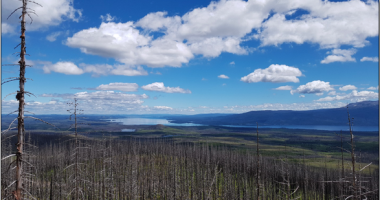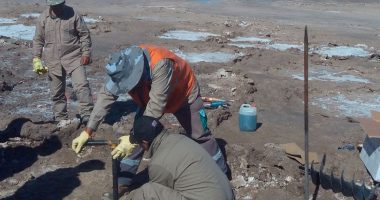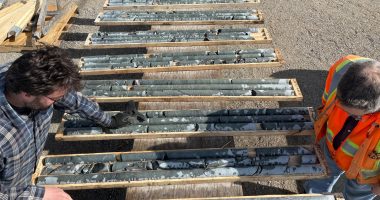- Vancouver-based Fremont Gold (FRE) has identified thick, near-surface oxide gold mineralisation at its Griffon gold project in Nevada
- The company has received assay results from three initial drill holes, with the full 10-hole, 2,000-metre program scheduled to be completed by the end of July
- The program has been designed to test a number of targets, including gold-in-soil anomalies, permissive stratigraphic targets and the Blackrock fault
- Initial results point to significant mineralisation, including 50.3 metres at 1.05 grams per tonne of gold from drill hole GF-20-3
- Fremont Gold (FRE) is currently down 3.12 per cent and is trading at C$0.16 per share
Vancouver-based Fremont Gold (FRE) has identified thick, near-surface oxide gold mineralisation at its Griffon gold project in Nevada.
The past-producing gold mine sits at the southern end of the Cortez Trend. It’s considered one of the most prolific gold trends worldwide and is home to Nevada Gold Mines’ Cortez Mine, which produced 963,000 ounces of gold in 2019.
Fremont Gold is part-way through a 10-hole, 2,000-metre drill program expected to reach completion by the end of July. Drilling activities have been designed to test several targets, including gold-in-soil anomalies, an area of un-mined mineralization to the southwest of the Hammer Ridge pit, permissive stratigraphic targets, and the Blackrock fault.
Assay results from the first three holes of the program have been received, and include 50.3 metres at 1.05 grams per tonne of gold from drill hole GF-20-3. This vertical holes was drilled to a depth of 280 metres, and focused on a region of previously identified mineralisation southwest of the Hammer Ridge Pit.
It’s primary aim was to confirm the mineralisation for a future NI 43-101 report, characterise the host rock formations, and intersect the Pilot Shale at depth – all of which was successful.
Similarly, drill hole GF-20-2 was drilled at an angle of 45-degrees to a depth of 170 metres, intersecting 30 metres at 0.3 grams per tonne of gold; while drill hole GF-20-1 was drilled vertically to a depth of 165 metres but did not return any anomalous gold results.
Blaine Monaghan, CEO of Fremont Gold, said he is very pleased with the initial results.
“Drill hole GF-20-3 met and exceeded our expectations. Thick, near surface, and oxidized, drill hole GF-20-3 reinforces our belief that Griffon holds tremendous opportunity for the discovery of a new Carlin-type deposit.
“I look forward to reporting the next set of drill results to investors,” he added.
Fremont Gold (FRE) is currently down 3.12 per cent to C$0.16 per share at 10:42am EDT.





